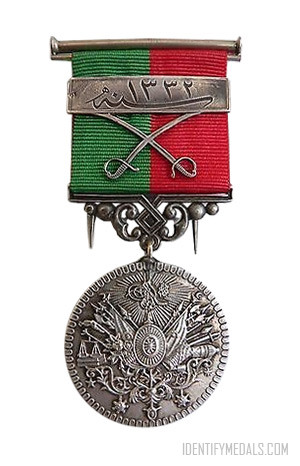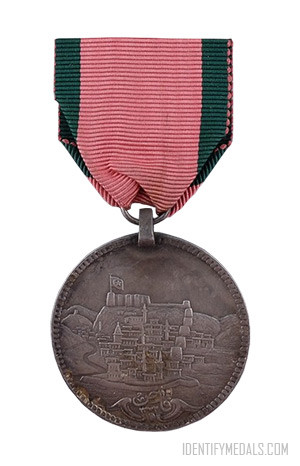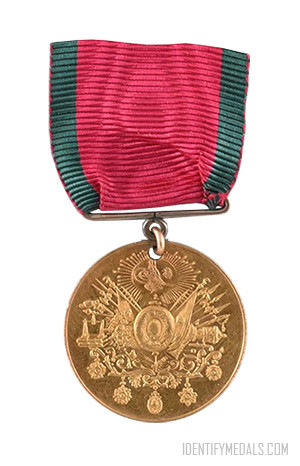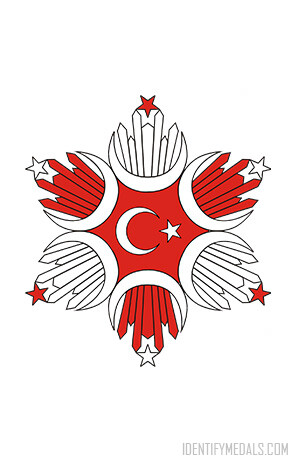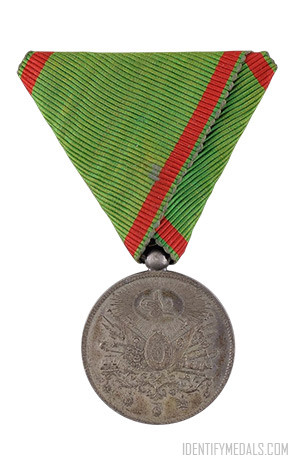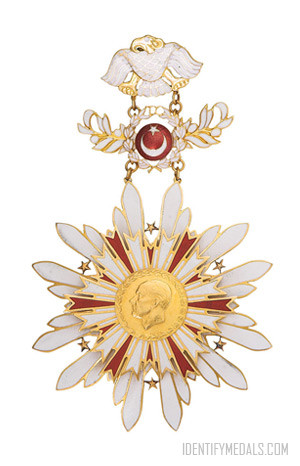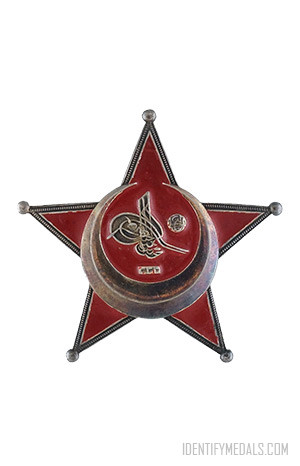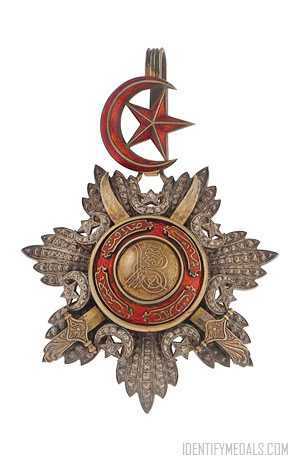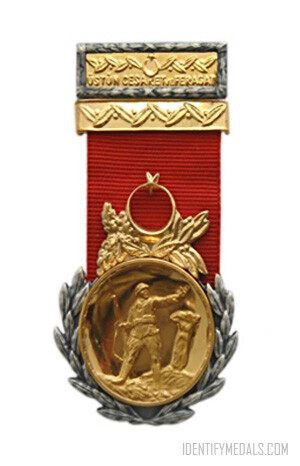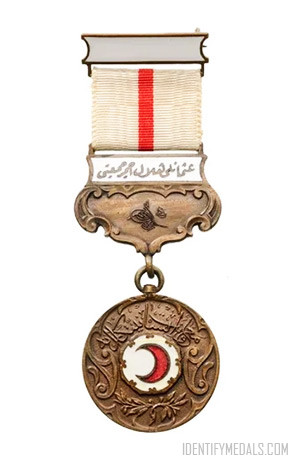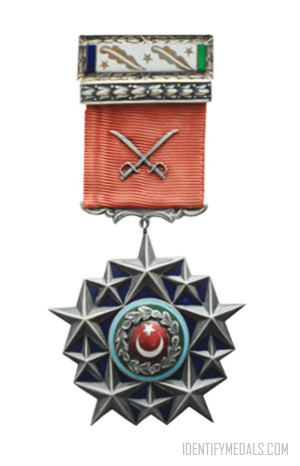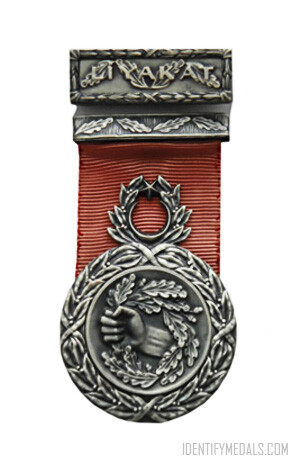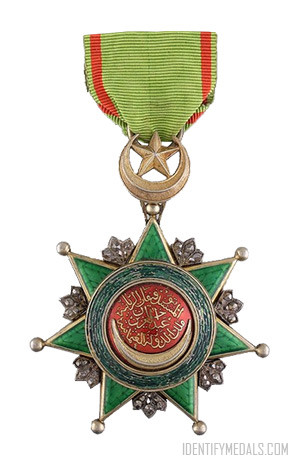The Imtiyaz Medal (or İmtiyaz Madalyası in Turkish), also known as Nishan-i-Imtiaz (Nişan-ı İmtiyaz) is an Ottoman military decoration that was instituted in 1882.
The gold Imtiyaz medal was the highest-ranking military decoration of the Ottoman Empire while the silver one ranked above the silver Liyakat Medal, but below the gold Liyakat.
A few examples of this medal are known to have been struck with the name of the recipient in raised letters, usually given to the heads of state of Turkey’s allies during World War I.
The Imtiyaz Medal Design
The medal is presented in two classes: gold and silver. The medal measures 37 mm and bears the Ottoman military coat of arms on the obverse, with its inscription “Relying on Divine Guidance and Assistance, Abdulhamid Khan, Sultan of the Ottoman Empire“. The tughra of Sultan Abdulhamid II is at the top.
The reverse has an inscription in Ottoman that translates roughly as “Medal for Those That Have Shown Exceptional Loyalty and Bravery for the Ottoman Empire“. Below that is a curved rectangular area where the name of the recipient could be engraved, and at the bottom is the date 1300 (1882).
The ribbon of this medal is half red, half green. Awards dating from World War I have a ribbon device, in the same material as the medal itself, consisting of a bar with the year 1333 (1915) above a pair of crossed sabers.

